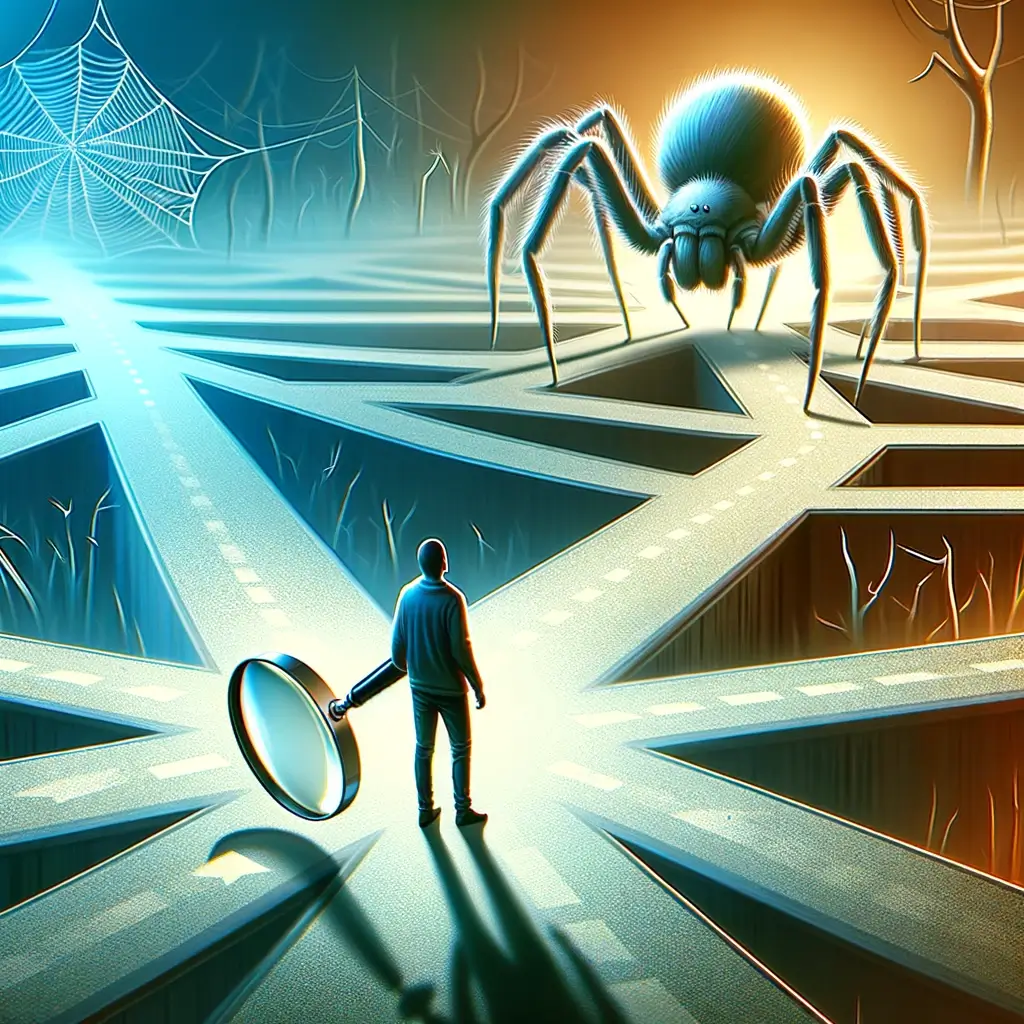This image is an accurate representation of this article, except that the spider does not exist. It’s invisible, you can walk through it. It’s projected by the mind.
Plaits
In the context of Transurfing Reality, a “plait” refers to the intertwining of various lifelines or paths that a person can take in life. It’s like a braid made up of different strands, each representing a potential reality. The concept suggests that by focusing your intentions and energy on a specific lifeline, you can navigate through the plait and manifest the reality you desire. Essentially, it’s about aligning your thoughts and actions with the version of reality you want to experience.
Reality
” when you look at fear under a magnifying glass, paradoxically, it gets smaller. When you observe reality, it loses its power. Reality doesn’t like being watched, it becomes elusive and at the same time ceases to have so much contorl over you. Don’t stare at reality, just take a sideways glance, so that it does not get annoyed at you”
The quote means that when you closely examine your fears, they often become less intimidating. By observing reality without getting too absorbed or fixated on it, you reduce its impact on you. Reality becomes less solid and more malleable when you don’t give it too much attention. Instead of staring directly at reality and allowing it to dominate your thoughts, take a more relaxed, peripheral view. This way, you avoid provoking any negative reactions from reality and maintain a sense of control.
Fears
For example, imagine you’re afraid of public speaking. If you obsess over this fear, it can grow and become overwhelming. But if you calmly examine your fear, breaking it down into manageable parts (such as fear of judgment, fear of forgetting your words, etc.), it becomes less daunting. By addressing each part separately and not letting the fear consume you, you can gradually overcome it.
This means that when you confront your fears directly and examine them closely, they often turn out to be less significant than you initially thought. By understanding the nature of your fear, you diminish its power over you.
For example, let’s say you’re afraid of spiders. If you take the time to learn about spiders, understanding that most of them are harmless and actually beneficial, your fear might decrease. By looking at your fear “under a magnifying glass,” you gain perspective and reduce its influence on your emotions.
